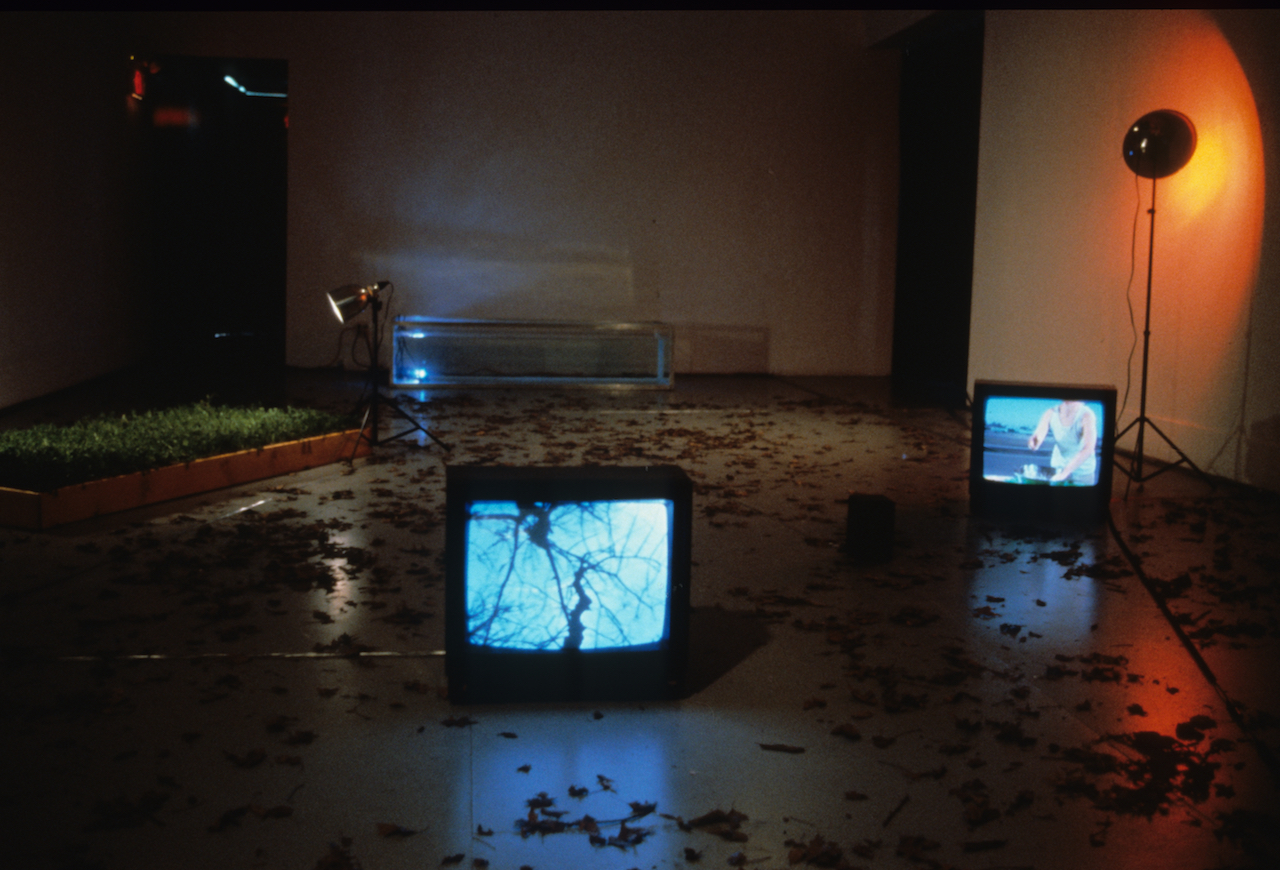The View of the Landscape From Here, 1990
1 video channel (audio), 1 video channel (no audio), text audio channel played through headphones, wooden bench, camomile plants in wood box with soil, gro-light on stand, brooder lamp on stand, plexiglass tank of water with submersible light, dried leaves
This work is about landscape, technology and magic.
My move from an urban to rural landscape made me more aware of the subject of relationship to the land and how culture determines our perception of landscape. (I use “culture” in its broad sense of human activity.) Our culture is commerce-driven and views land as a commodity. Technology, the handmaiden of our culture, is the tool that delivers the land to us.
Other cultures have/had radically different ways of viewing. Western culture has usually responded with the arrogance of the colonizer to spiritual expressions outside of its experience; including those about relationship to land. We admire what is manifest (and saleable) and use words such as “primitive” and “magic” to describe what is not. At the present time, the advanced state of the destruction of our landscape has provoked a re-evaluation of our relationship to and use of the land. This re-evaluation includes a changed perspective on cultural perceptions of land different to the dominant Western one. In Canada, we need to learn from our indigenous cultures. I have no insight or experience initiating me to native culture. But I can see that the native relationship to landscape is something the dominant culture needs to listen to and learn from.
My own research has been in the area of ancient Celtic culture. Part of my interest is in a cultural perception of the land as a spiritual partner. Part of it is because of a sense of loss; lost culture, lost values, lost knowledge. I think I have this preoccupation because of our cultural present; one that requires us to recoup our losses or lose everything to the multinational, materialist, macho machine that has led us to this place.
**
My ideal as an artist is to make work that is intellectually, emotionally and spiritually engaging. I want to create images and experiences that are not afraid to acknowledge pain but are life-affirming and healing in response.
My way of working requires a strong personal basis and I often filter non-specific intellectual concerns through personal experience.
Representation of landscape is a formal concern of this piece. In the videotape I am interested in visual texture and camera movement that reflects the body’s motion. I gather footage in a diaristic, intuitive manner, most of it is shot directly around my home.
Elizabeth Chitty
Jordan, Ontario
April 1990
Exhibited
Niagara Artists’ Company, St. Catharines, ON, 1990
Acknowledgements
Camomile nurseryperson: Dorene Inglis
Bench carpentry: Charles Chitty
Video post-production engineer: Helen Hand
Music composition, audio engineering: Paul Hodge
Monologue recording: Music Gallery
Production transportation: Robert Siddons Riley
Slo-Mo footage recording: The Arts Television Centre
Ontario Arts Council





